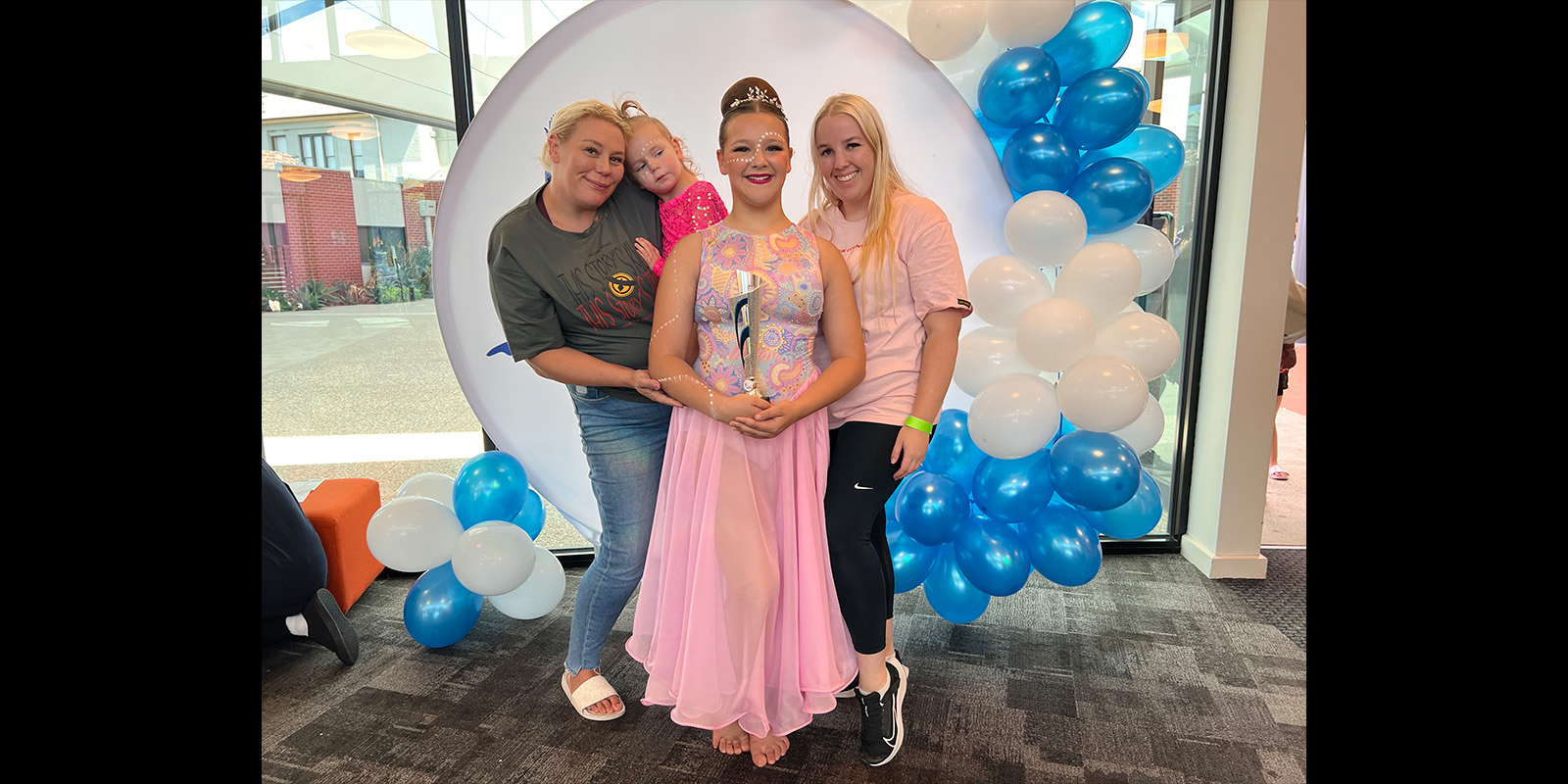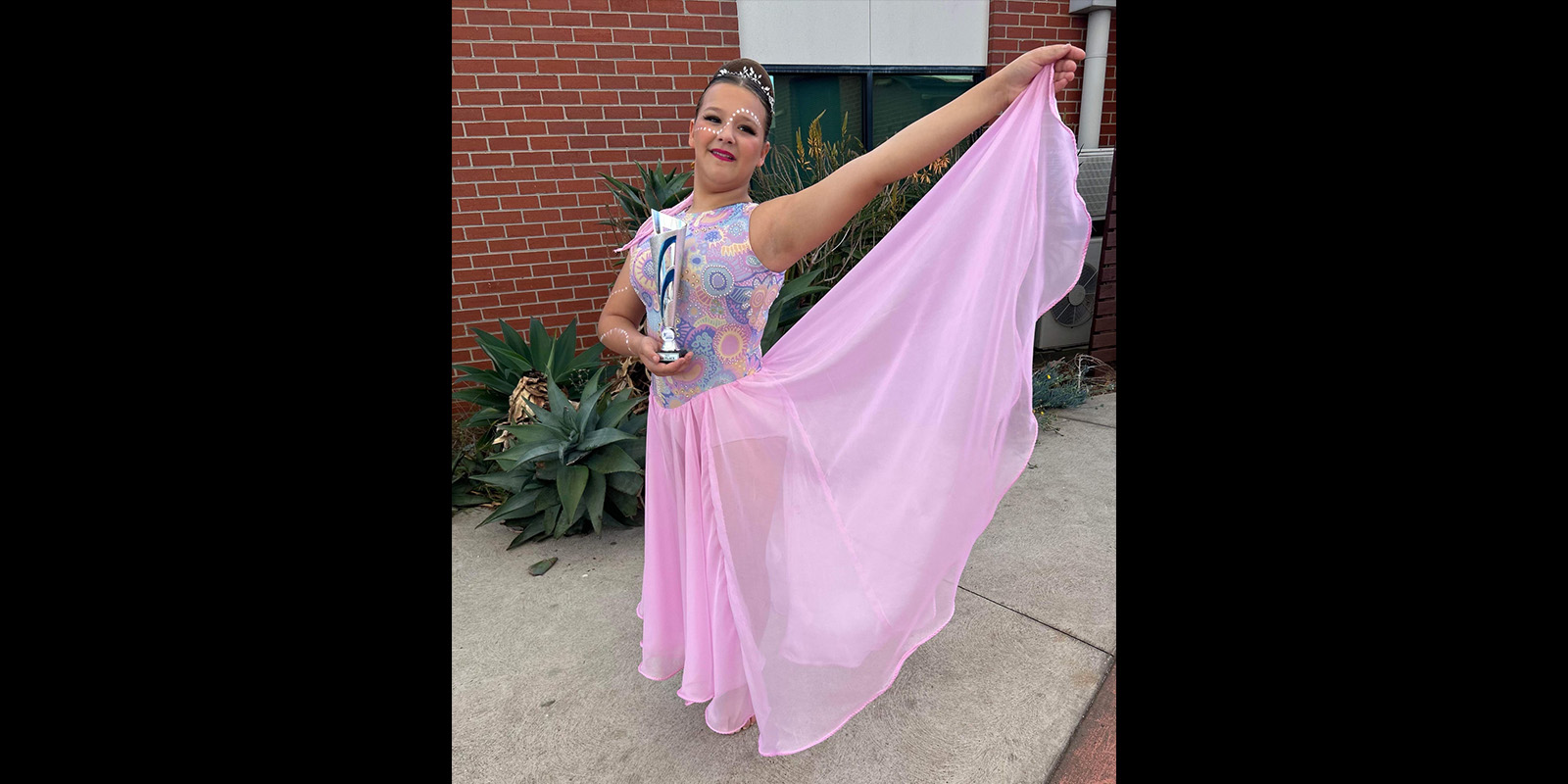Uncle Archie’s voice bellows loud through the auditorium’s speakers as Breanna Lee’s voice takes over singing ‘Took the children away’.
On stage, Mia Taylor (Wiradjuri & Wemba Wemba) walks out, performing a carefully choreographed Calisthenics routine. Using the entire stage, what follows is a sequence of moves; gymnastics, ballet, folk and modern dance; as Mia shares what Uncle Archie’s song means to her.
“It’s just my story and I really love it”.
~ Mia Taylor.
The song finishes and so too does Mia’s dance. Rebecca Taylor (her mother, Wiradjuri & Wemba Wemba) cheers her joy. Silence follows; the adjudicators critique Mia’s routine, assigning points for execution and presentation.
The First Nations Calisthenic’s Club is competing in the Glenroy Calisthenic’s Solo Competition on Wurundjeri Country and Mia Taylor wins thirds place. It is a wonderful achievement, especially considering the club has only been in operation for six months.


Mia Taylor with her mother Rebecca, her little sister Tiah and Mia's coach, Amanda Hutton.
The First Nations Calisthenics Club is the brainchild of Rebecca Taylor. Presently, it is the only one of its kind here in Victoria and Australia.
The idea was born one night whilst Rebecca was sitting in her spa. What followed was a written framework, outlining both vision and process, and a deluge of phone calls, to Elders, Aunties, Uncles, Funding Bodies, Community Orgs; the lot, to make this dream a reality.
The First Nations Calisthenic’s Club was finally born. One month later, the club receives its first students. Six months further on and more that 40 children have passed through its doors.
What makes the First Nations Calisthenics significantly different is its grounding practice in creating a culturally safe space where children of all abilities feel welcomed and included.
“We always do our Welcome to Country. We talk about how our week has been and if we feel safe and included”. ~ Rebecca Taylor.
Language is used to teach and communicate body parts with movement. Elders are invited and mob-feed nights are held to promote healthy lifestyles within the team and their families. The classes themselves, include stretching, dancing, acrobatic movement and choreography with music and song.


Mia Taylor with her trophy.
Traditionally Calisthenics is a sport Mob usually don’t engage with. It’s expensive and most mainstream clubs lack the awareness to create culturally safe spaces to support the needs of our Community.
This is where First Nations Calisthenics differs.
“It’s just like a little family, outside of your family.” ~ Mia Taylor
Supporting children from 2 years and up, it is an all abilities club where programs and training can be tailored to suit the specific needs of every child who attends.
“We can provide 1-on-1 training and we can make time outside our usual hours to support their growth and development to the point where they no longer feel the need for the additional assistance”.
First Nations Calisthenics has provided a space for Children in out-of-home-care living with non-Indigenous Carers; to gather and connect with other Children, Aunties, Uncles and Elders. It’s a space that provides an added layer of Cultural connection.
First Nations Calisthenics is currently free for all its students; however this is dependant on funding. Rebecca and her team of coaches and students practice at the Barrbunin Beek Aboriginal Gathering Place. The goal is to find a space to call their own.
“We’d like to see our own space where our children can paint on the walls. We’d love to have our own little kitchenette that we could cook from and cook meals for families. To have our space that we can use 24/7.”
To learn more First Nations Calisthenics and the work they do, connect through their Facebook page or contact Rebecca directly.
- e: [email protected]
- p: 0403 932 267
- First Nations Calisthenics facebook page
